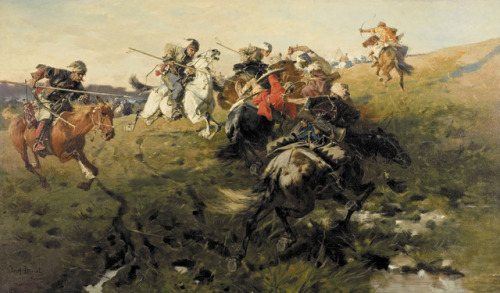#ukrainian history
Valerie A. Kivelson and Christine D. Worobec, editors. Witchcraft in Russia and Ukraine, 1000-1900: A Sourcebook. Northern Illinois University Press, 2020. Paperback edition. 506 pages.
Shop link in bio.
The Grand Princess Olga of Kyiv
One of the most famous Ukrainian women in history Olga [sometimes Volga, Helga, or Olena, Elena] (around 900-925) of Kyiv was a ruler and a saint.
Born in Pleskov of Varangian (Viking, thus Swedish) origin and married at 15 years old to Prince Igor I of Kyiv, Princess Olga spent most of her life in Kyiv, then the center of the Rurik dynasty and now the capital of Ukraine. At the time of her husband’s reign, Kyiv was the center of the Kyivan Rus, a loose tribal federation, which fought with (meaning sometimes as allies and sometimes as enemies) the Drevlians
When the Drevlians stopped paying tribute and killed Igor, Olga began to lead as regent on behalf of her son Sviatoslav (then three years old). The Drevlians attempted to force Olga into marriage with Prince Mal, the man who murdered her late husband. Pretending to go along with it, Olga instead had the Drevlian ambassadors buried alive. Then she asked the Drevlians to send their best men, to escort her with honor, and she locked them in a bathhouse and set them all on fire. Then she got them to send a thirdof contingent of important Drevlian men, who she had murdered. Then she got together her army and went to war against the Drevlians, where she won rather easily, except the city of Iskorosten (now Korosten, Ukraine). She promised to end the siege for the small price of three birds from every house, and then sent those birds back ablaze and the city burned down.
Olga’s revenge quest is her most interesting story, but it is worth noting that, as Ukraine’s first female ruler, she was an excellent stateswoman. She expanded the lands she ruled and revamped the tribute system (the first known legal reform in all of Eastern Europe!), evaded more marriage proposals, established hunting grounds, towns, and trading posts.
She converted to Christianity and is venerated as a saint in the Eastern Orthodox Church.





